Introduction
Dadao Rou, a beloved traditional Chinese cured pork dish, holds a cherished place in culinary heritage. Originating from regions where preservation techniques were essential for sustaining meat through harsh winters, this recipe combines salt, spices, and time to transform humble pork into a flavor-packed delicacy. The name “Dadao Rou” roughly translates to “big knife meat,” a nod to the thick, hearty slices traditionally served during festivals and family gatherings. This article delves into the intricate process of crafting authentic Dadao Rou, ensuring every step—from ingredient selection to aging—is demystified for home cooks eager to preserve this timeless tradition.
Ingredients and Tools
Before embarking on this culinary journey, gather the following:
- 5 pounds pork belly or shoulder (preferably with a balanced fat-to-lean ratio)
- 1 cup coarse sea salt (non-iodized for optimal curing)
- 2 tablespoons Sichuan peppercorns (crushed)
- 1 tablespoon black peppercorns (crushed)
- 1 tablespoon fennel seeds (toasted and ground)
- 1 teaspoon cinnamon powder
- 3-4 star anise pods (ground)
- 1/2 cup brown sugar (or honey for a sweeter finish)
- 1/4 cup Shaoxing wine (or dry sherry)
- 10 garlic cloves (minced)
- 3-inch ginger root (grated)
- Muslin cloth or cheesecloth
- Butcher’s twine
- Airtight container or ceramic crock
- Smoking chips (optional: oak, hickory, or applewood)
Step 1: Meat Selection and Preparation
The foundation of exceptional Dadao Rou lies in selecting the right cut. Pork belly, with its layers of marbling, is ideal for its ability to remain tender during curing. Shoulder, a leaner alternative, offers a robust texture. Trim excess fat if desired, but retain a 1/4-inch layer to enhance flavor and moisture retention. Rinse the meat under cold water, pat dry thoroughly, and place it on a wire rack in the refrigerator for 2-3 hours. This “dry aging” step firms the meat and removes surface moisture, aiding salt absorption.
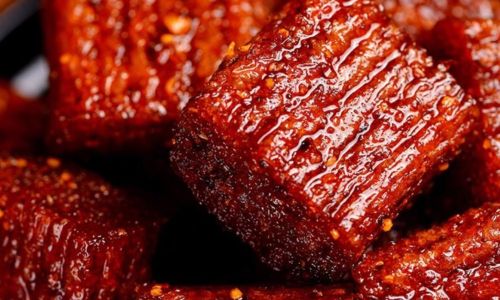
Step 2: Crafting the Cure Mixture
The cure is the soul of Dadao Rou, a symphony of salt, spices, and aromatics. In a mortar, combine Sichuan peppercorns, black peppercorns, and fennel seeds. Grind until fragrant but not powdery. Transfer to a bowl and mix with cinnamon, star anise, brown sugar, and a pinch of red pepper flakes (optional for heat). Add minced garlic and grated ginger, then drizzle Shaoxing wine while stirring to form a coarse paste. The alcohol not only imparts depth but also inhibits harmful bacteria during curing.
Step 3: Applying the Cure
Lay the pork on a large baking sheet. Using gloved hands, massage the cure mixture generously over all surfaces, ensuring even coverage. For thick cuts, make shallow incisions to allow flavors to penetrate. Place the meat in a non-reactive container (glass or ceramic), stacking layers if necessary. Cover with plastic wrap and refrigerate. Curing time varies: 3-4 days for belly, 5-7 days for shoulder. Flip the meat daily, redistributing juices to prevent uneven salting. A pool of liquid at the bottom signals successful osmosis.
Step 4: Rinsing and Drying
After curing, rinse the meat under cold water to remove excess salt. Pat dry with paper towels, then hang it in a cool, well-ventilated area (60-70°F/15-21°C) using butcher’s twine. Alternatively, place it on a wire rack over a baking sheet. This “drying” phase lasts 6-12 hours, forming a tacky pellicle—a protein-rich layer that enhances smoke adhesion and texture.
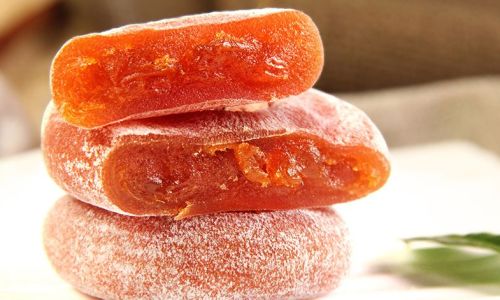
Step 5: Smoking (Optional but Recommended)
For authentic Dadao Rou, smoking imparts a smoky complexity. Soak wood chips in water for 30 minutes. If using a smoker, maintain a temperature of 160-180°F (71-82°C). For stovetop smoking, line a wok with foil, add chips, and position a rack above. Smoke the meat for 2-4 hours, depending on desired intensity. Cold smoking (below 90°F/32°C) is ideal for preserving the meat’s integrity, while hot smoking (above 160°F/71°C) cooks it partially.
Step 6: Air Drying and Aging
Post-smoking, hang the meat in a cool, dry place with good airflow (50-60% humidity, 50-60°F/10-15°C). A basement, garage, or wine cellar works well. Aging duration depends on climate and taste: 2-4 weeks for mild flavor, 6-8 weeks for intense funkiness. Monitor regularly, discarding any mold (a light dusting is harmless; wipe with vinegar if concerned). The meat will darken and firm as it ages.
Step 7: Storage and Slicing
Once aged, wrap the Dadao Rou in muslin cloth or parchment paper. Store in a cool, dark place or refrigerate for up to 6 months. Freezing extends shelf life to a year. To serve, sharpen a chef’s knife and slice thinly against the grain. The meat should be translucent at the edges with a rose-hued center—a hallmark of proper curing.

Culinary Applications
Dadao Rou’s versatility shines in various dishes:
- Stir-fries: Render slices in a hot wok, then toss with vegetables and soy sauce.
- Steamed Buns: Fill mantou with shredded meat, pickles, and hoisin sauce.
- Soups: Add to hot pot or congee for umami depth.
- Appetizers: Serve with steamed buns, mustard, and coriander.
Troubleshooting Common Issues
- Excessively Salty Meat: Soak in cold water for 1-2 hours before cooking.
- Tough Texture: Overcooking; slice thinly and cook briefly.
- Mold Growth: Wipe with vinegar; severe cases require discarding.
- Pellicle Not Forming: Increase ventilation or use a fan.
Cultural Significance
Dadao Rou transcends mere sustenance; it embodies resilience and resourcefulness. Historically, families cured meats to endure winter scarcity, with recipes passed through generations. Today, it symbolizes connection to ancestral traditions, often prepared for Lunar New Year or weddings. The act of curing mirrors patience and care—virtues woven into Chinese cultural DNA.
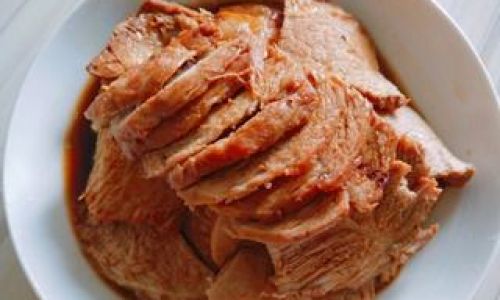
Conclusion
Crafting Dadao Rou is a labor of love, demanding time and attention but rewarding the cook with a taste of history. Each step—from selecting the finest pork to patient aging—honors centuries-old wisdom. Whether enjoyed in a steaming hot pot or nestled in a fluffy bun, this cured treasure bridges past and present, inviting diners to savor the essence of Chinese culinary artistry. With practice, even novices can master this timeless craft, ensuring its legacy endures for generations to come.
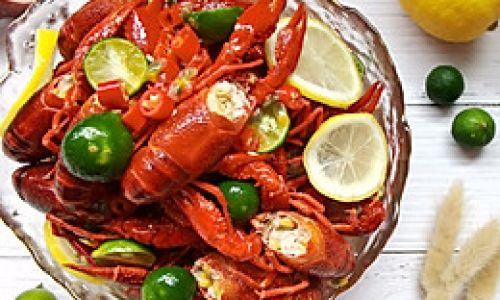
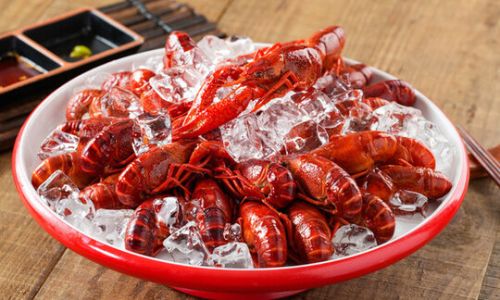
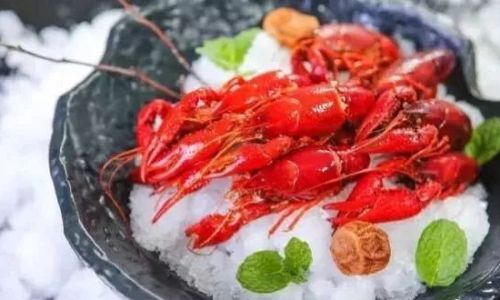
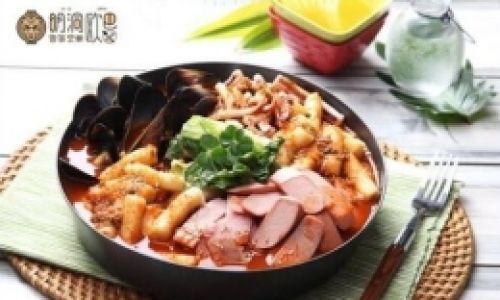

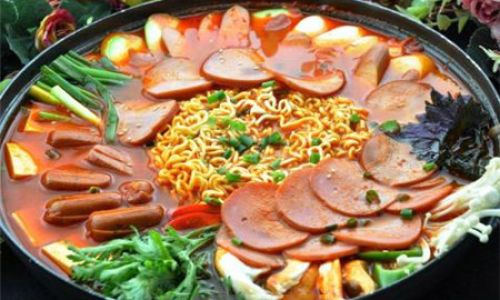
0 comments